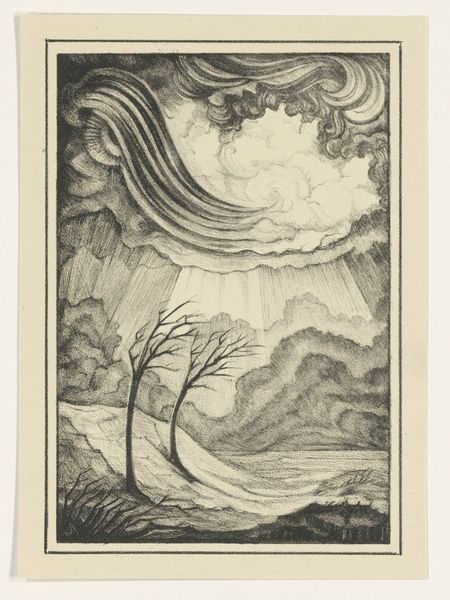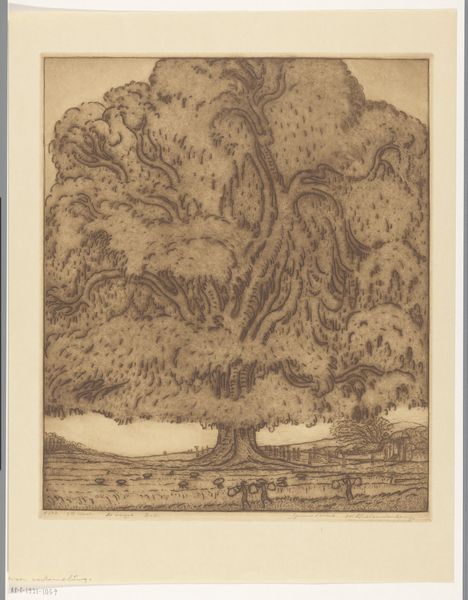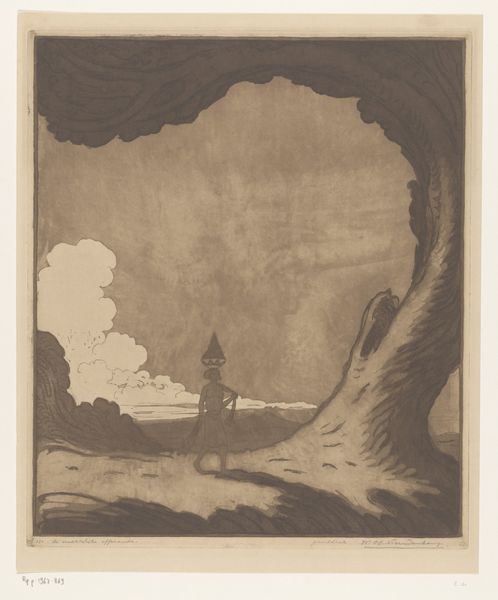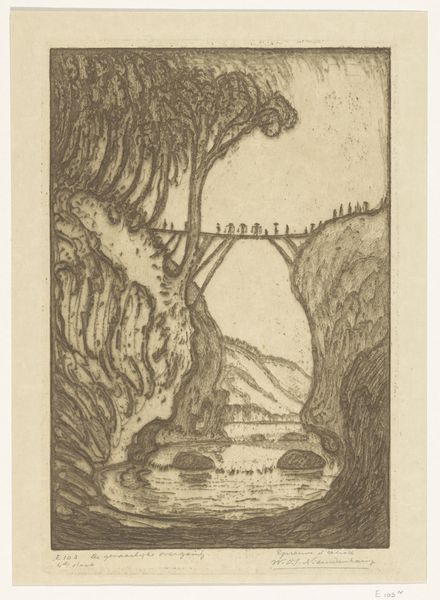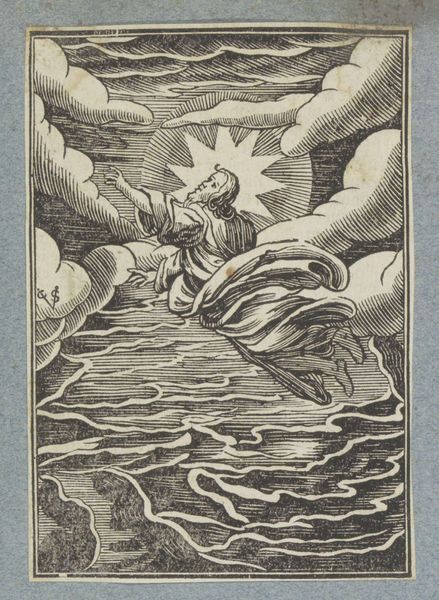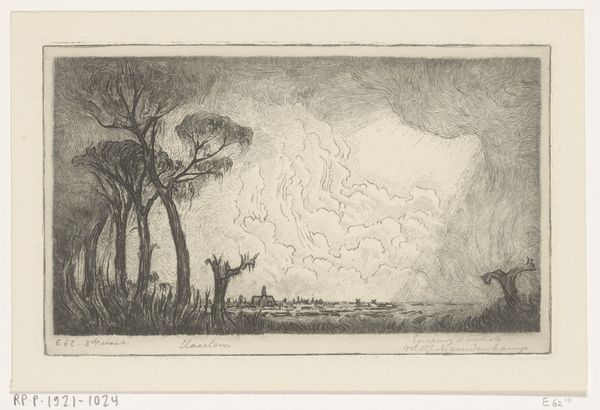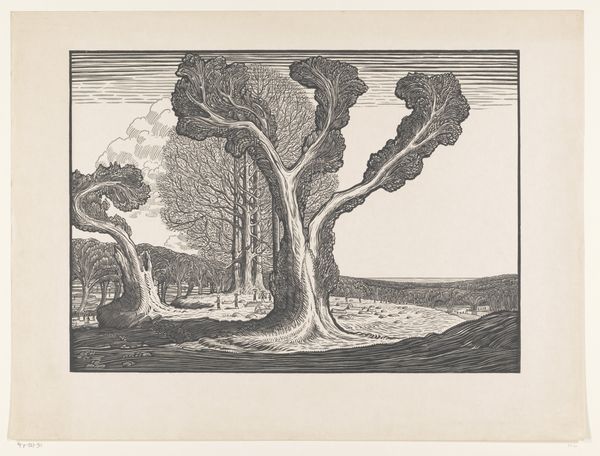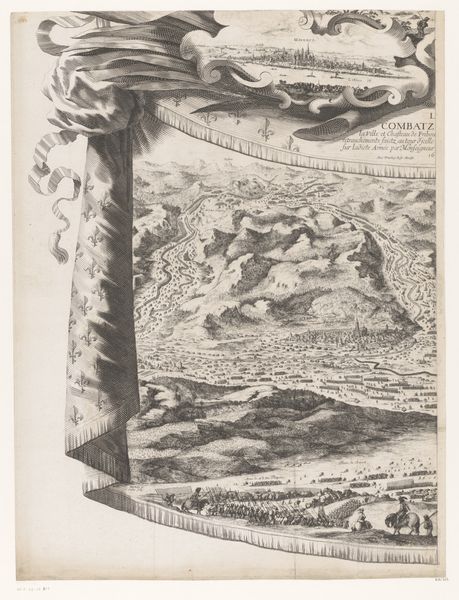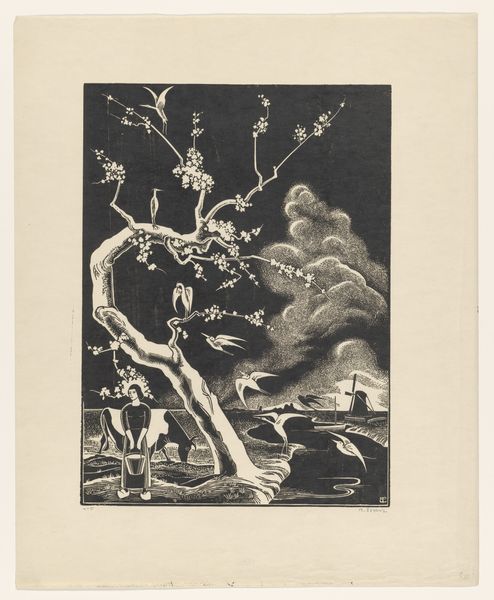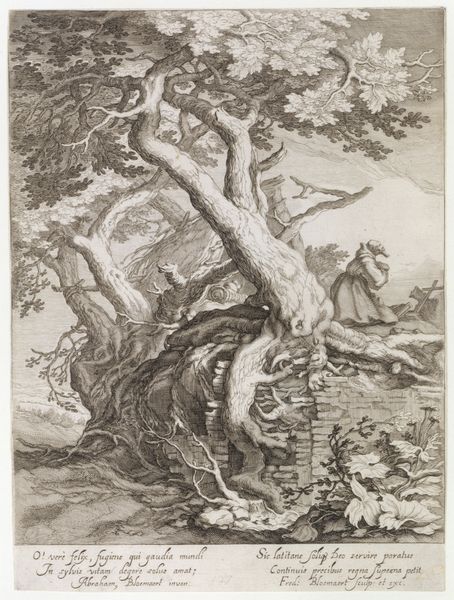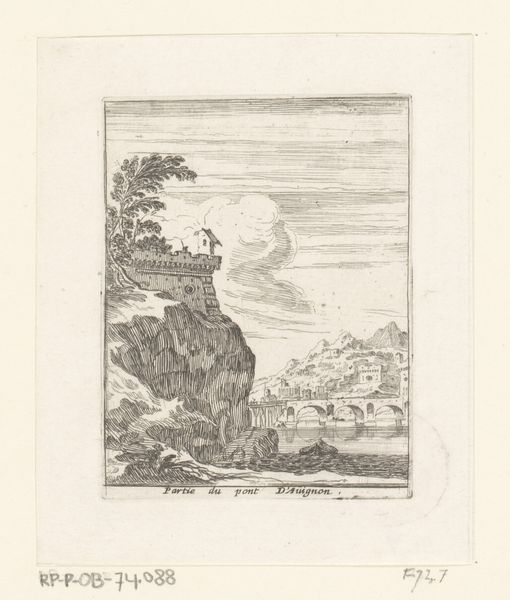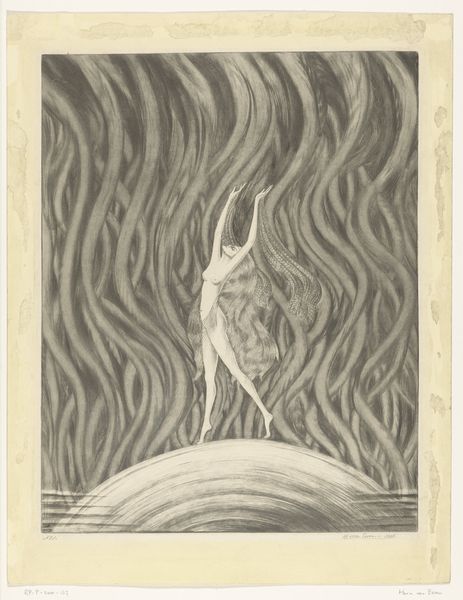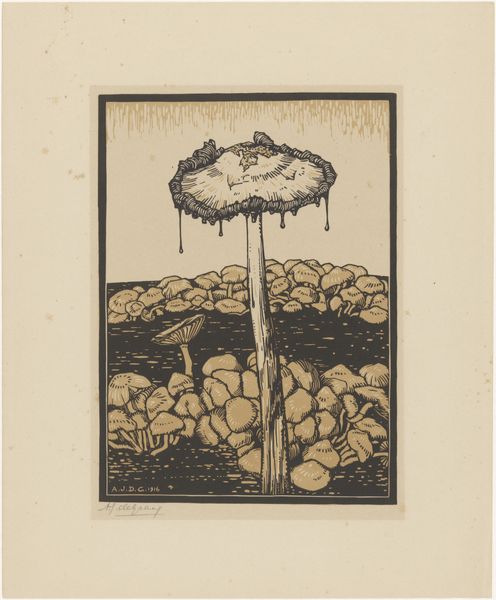
Dimensions: height 280 mm, width 198 mm
Copyright: Rijks Museum: Open Domain
Curator: This drawing by Henk Schilling, dating from 1903 to 1920, is titled "Landscape with Bare Trees and Cloudy Sky." What's your immediate impression? Editor: A brooding, elemental energy. It looks like a landscape on the verge of transformation, maybe even destruction. The use of pencil is striking. Curator: Absolutely. Schilling seems deeply invested in a romantic tradition that explored the emotional resonance of the natural world. I see reflections of societal anxiety, particularly regarding human impact on the landscape itself. Editor: You're right. The medium reflects this theme, right? Pencil lends itself well to capturing the textural details of the natural world, especially these tempestuous clouds and gnarled trees. The artist had to choose pencil and paper as material--he even highlights the work's process through expressive mark making. Curator: Precisely. I think he’s exploring a deep ambivalence, suggesting how industrial labor transformed landscape and humanity alike. There’s the sublime awe of nature combined with a palpable sense of vulnerability, a common Romantic preoccupation. Editor: Looking closer, there's a raw, almost unfinished quality, to the execution. This rawness contributes to its impact. It also serves to bring us back to the material, to the hand of the maker, that this was an intentional, labor-intensive practice, no accident. Curator: That hand is expressing what I see as a dialogue between art and political consciousness, a yearning for an uncorrupted natural world juxtaposed with its increasing impossibility. It echoes philosophical themes present in ecofeminism and deep ecology, really underscoring those questions around our relationship to the Earth. Editor: I see the impact that even this seemingly simple landscape communicates—that there is beauty, terror, and inherent change, conveyed through such humble tools. It's a potent statement, isn't it? Curator: It really is. By studying the artwork through this socio-historical lens, we see the drawing becomes more than just an appealing image. Editor: Exactly. By thinking about the materials and method we open a view onto that complexity.
Comments
No comments
Be the first to comment and join the conversation on the ultimate creative platform.
